StarkNet: Shaping the Future of Ethereum with a Layer 2 Solution
Listen to me carefully and read my article below carefully. Something huge is coming.
The world of crypto has witnessed significant growth in recent years, and Layer 2 solutions built on top of major blockchains like Ethereum have further accelerated this growth. One such Layer 2 solution, StarkNet, is a project that has garnered considerable attention within the Ethereum community. In this article, we will delve into StarkNet, exploring how it works, its use cases, and how it is governed by the community.
Get to Know Starknet
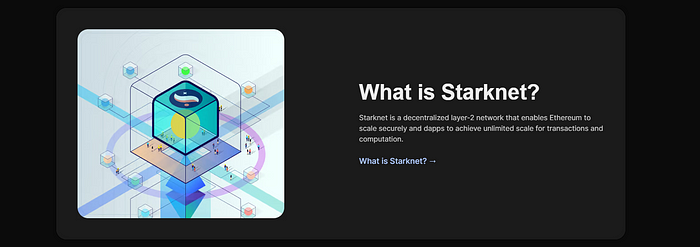 StarkNet is a Validity Rollup developed by StarkWare and serves as a Layer 2 solution for Ethereum. This system aims to provide high transaction throughput, low gas costs, and maintain the security levels of Ethereum’s Layer 1. StarkNet achieves scalability by replacing resource-intensive Layer 1 computations with lightweight L1 verifications using STARK proofs computed off-chain. This, in turn, enhances the efficiency of the Ethereum network while reducing gas fees.
StarkNet is a Validity Rollup developed by StarkWare and serves as a Layer 2 solution for Ethereum. This system aims to provide high transaction throughput, low gas costs, and maintain the security levels of Ethereum’s Layer 1. StarkNet achieves scalability by replacing resource-intensive Layer 1 computations with lightweight L1 verifications using STARK proofs computed off-chain. This, in turn, enhances the efficiency of the Ethereum network while reducing gas fees.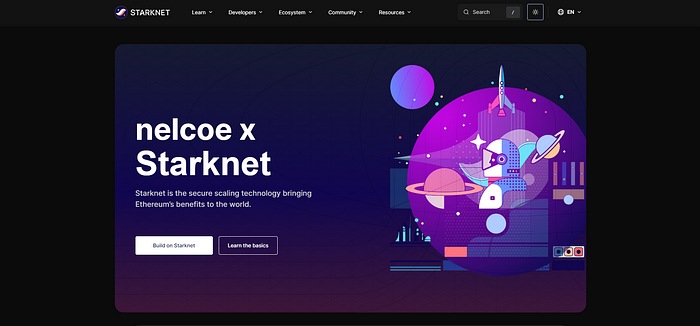
How Does StarkNet Work?
StarkNet is a form of “ZK-Rollup,” known as a Validity-Rollup, that supports general computation. It currently operates as an L2 network on Ethereum. The ultimate L1 security of StarkNet is ensured through the use of the safest and most scalable cryptographic proof system — STARK.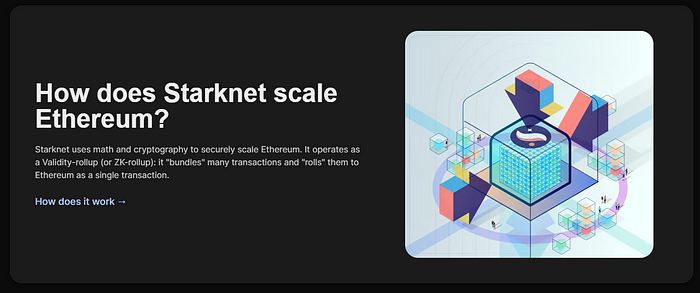 StarkNet contracts are predominantly written in the Cairo language, a Turing complete programming language specifically designed for STARK proofs. These contracts encode the business logic of applications, handling specific transactions sent by users.
StarkNet contracts are predominantly written in the Cairo language, a Turing complete programming language specifically designed for STARK proofs. These contracts encode the business logic of applications, handling specific transactions sent by users.
StarkNet Roadmap
The future of StarkNet looks promising, as the project continues to make significant contributions to the Ethereum ecosystem. The roadmap of the project outlines upcoming updates and goals. This roadmap demonstrates how StarkNet will continue to grow and add more value to the Ethereum ecosystem.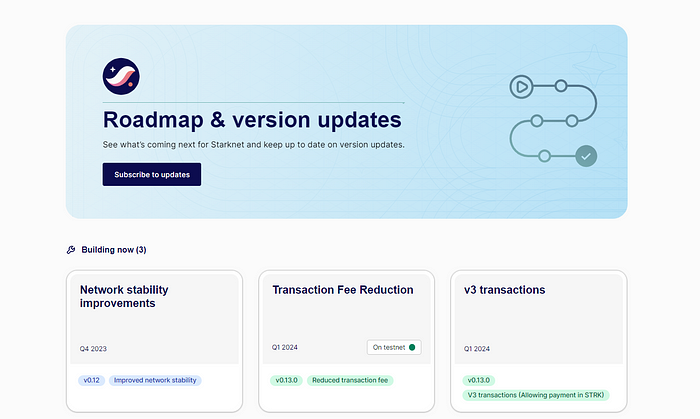
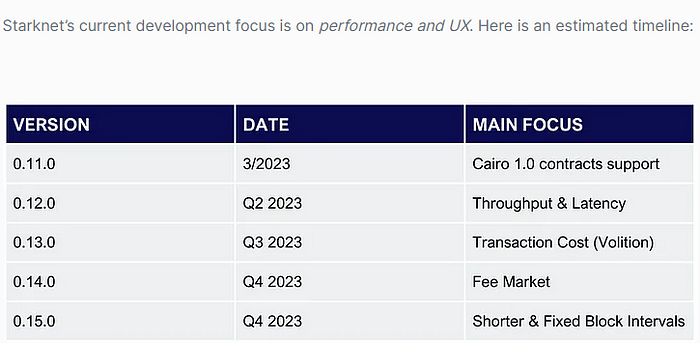 Let me share an important information with you.Starknet v0.13.0 is scheduled to be available on mainnet on January 10, 2024.
Let me share an important information with you.Starknet v0.13.0 is scheduled to be available on mainnet on January 10, 2024.
With STRK token v0.13.0 In addition to TX fee payment, it will also support the fee market and Paymaster… The increased use of STRK token will bring tremendous dynamism to the ecosystem.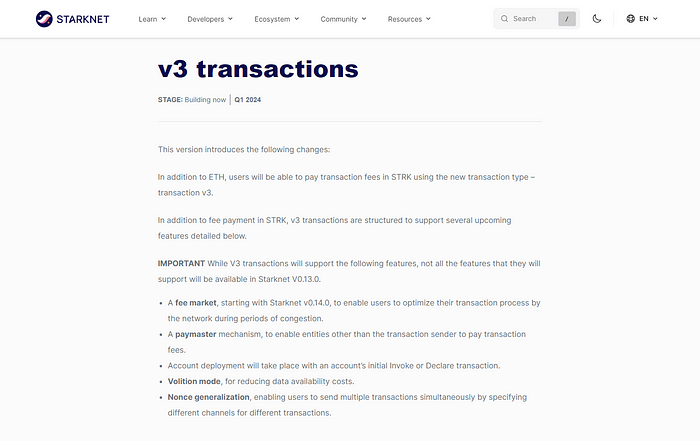 See the picture below. Let’s zoom in a little closer for those who can’t see :)
See the picture below. Let’s zoom in a little closer for those who can’t see :)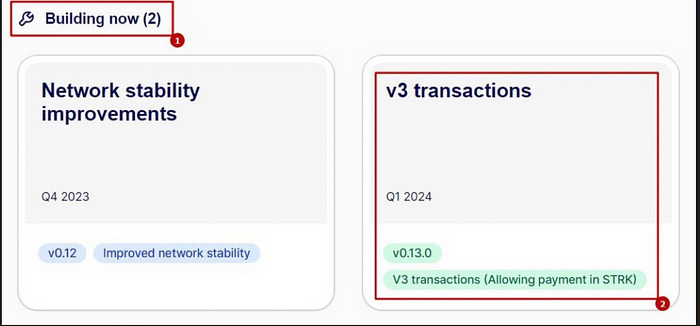
StarkNet Token and Tokenomy
The StarkNet Token (STRK) is deployed on the Ethereum Mainnet and serves various purposes. STRK acts as a staking token for participation in StarkNet’s consensus mechanisms, a governance token, and a means of paying transaction fees. The token distribution involves locking tokens held by StarkWare shareholders, employees, and independent partner software developers for a four-year period, with a gradual release starting after one year. Locked tokens can be used for voting and staking but cannot be transferred or traded. The token will play a vital role in enhancing StarkNet’s decentralization through voting, staking, and fee payments.
I am adding the tokenomy, you can review it, let me remind you that the STRK token is printed on the Ethereum network.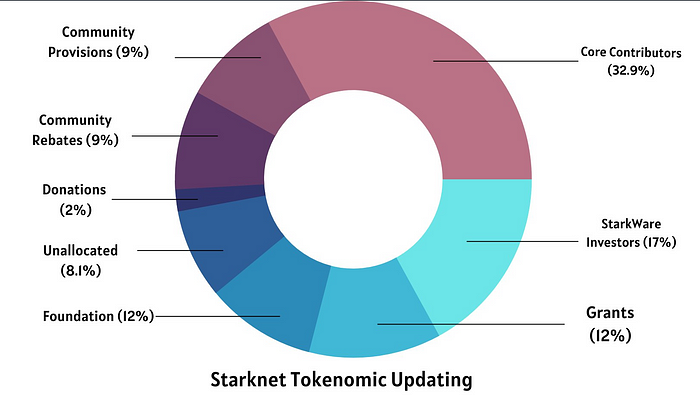
StarkNet Governance
StarkNet governance primarily focuses on protocol upgrades. Each StarkNet version upgrade is first deployed on the Goerli Testnet, allowing the community to examine and test it. During this period, a Snapshot proposal is initiated, and the community can vote to approve or reject the upgraded version for Mainnet deployment. If the proposal receives a majority of ‘YES’ votes during the voting period, the upgrade passes, and StarkNet Mainnet is upgraded accordingly.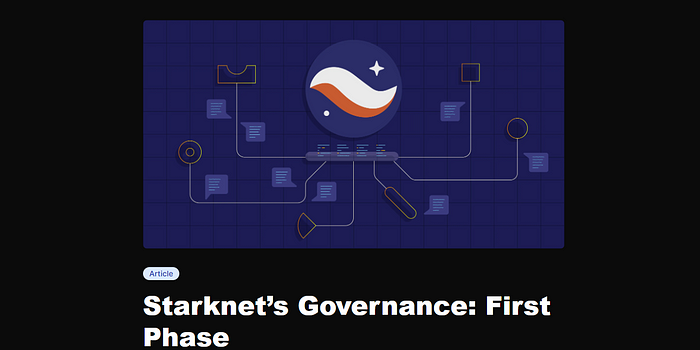 StarkNet is a significant Layer 2 solution within the Ethereum ecosystem. With its ability to reduce transaction costs, increase performance, and ensure security, it plays a crucial role in shaping Ethereum’s future. This article has explored the fundamental features of StarkNet, its operating principles, and how it is governed by the community. StarkNet’s contributions to the crypto world and its future potential are poised to make a substantial impact.
StarkNet is a significant Layer 2 solution within the Ethereum ecosystem. With its ability to reduce transaction costs, increase performance, and ensure security, it plays a crucial role in shaping Ethereum’s future. This article has explored the fundamental features of StarkNet, its operating principles, and how it is governed by the community. StarkNet’s contributions to the crypto world and its future potential are poised to make a substantial impact.
I would like to mention the disadvantages of Starknet. The low number of developers with qualified knowledge of the Cairo language causes the number of protocols developed in the Starknet network to be low. Yes, personally, I think mobility is low. But the team sees this and is making a concerted effort to support developers.. They recently launched an incentive program called “Early Community Member Program” (ECMP). Within the scope of this program, 50 million STRK tokens will be distributed, the application for the program ended on November 23.
Thank you for reading this far.
Resources:
https://www.starknet.io/en/
https://docs.starknet.io/documentation/
https://book.starknet.io/
https://www.starknet.io/en/roadmap/v3-transactions
https://community.starknet.io/t/announcing-the-early-community-member-program/102092
https://medium.com/@vendetta01/starknet-shaping-the-future-of-ethereum-with-a-layer-2-solution-074a6390ed43




































